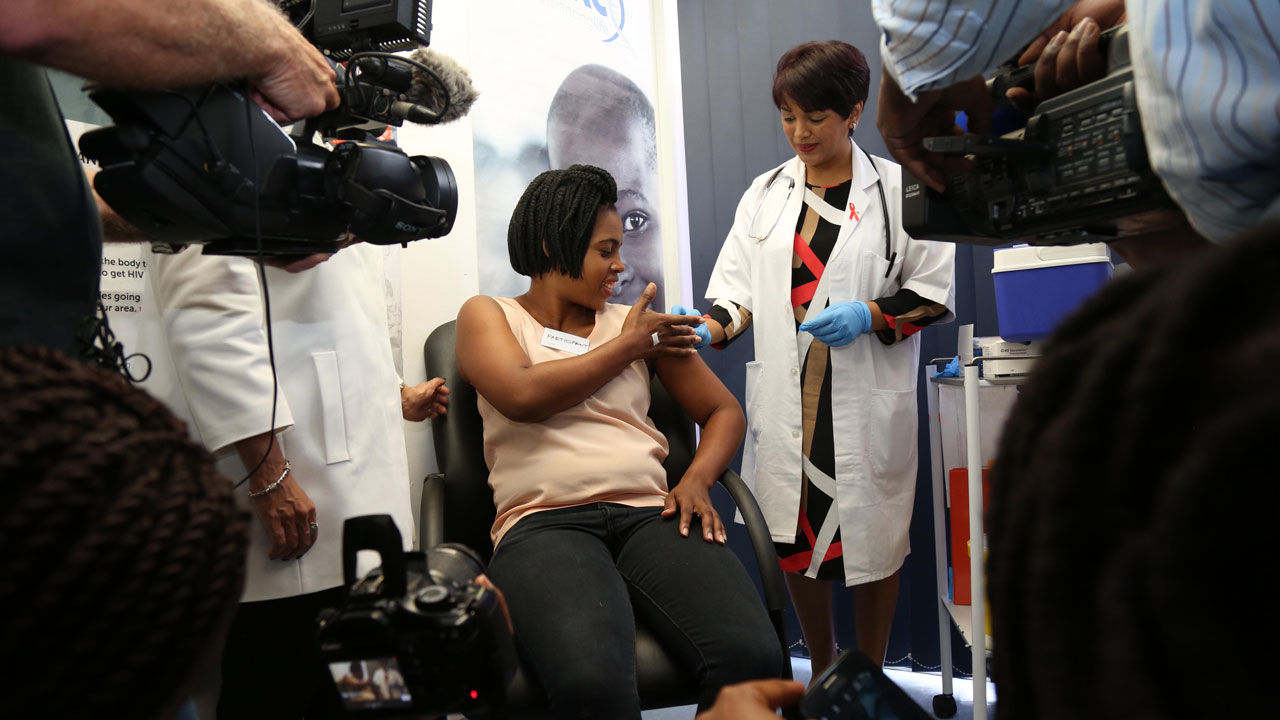
The failure-ridden search for a vaccine that can stop the AIDS virus has delivered yet another frustrating defeat. The HIV vaccine that had moved furthest along in human testing does not work, and the $104 million trial in South Africa evaluating it has been stopped early. “There’s absolutely no evidence of efficacy,” says Glenda Gray, who heads the study and is president of the South African Medical Research Council (MRC). “Years of work went into this. It’s a huge disappointment.”
The efficacy study, which began in October 2016, is known as HVTN 702. It enrolled 5407 sexually active, HIV-uninfected men and women between 18 and 35 years of age at 14 sites across the country. Researchers randomly assigned half of the participants to receive a pair of HIV vaccines used in a one-two punch called a prime boost, whereas the other half received placebo shots. The trial was supposed to last until July 2022. But on 23 January, an independent monitoring board that takes scheduled, sneak peaks at the data to evaluate safety and efficacy, informed Gray and the other leaders of the study that it was “futile” to continue. There were 129 infections in the vaccinated group and 123 in those who received the placebo. “I was catatonic,” Gray says.
No evidence exists that the vaccine caused harm, as happened in a different large HIV vaccine study that was abruptly halted in 2007. Susan Buchbinder, an epidemiologist at the University of California, San Francisco, who co-chaired that earlier sobering study, congratulates her colleagues in South Africa for conducting a scientifically rigorous, complex trial. “The trial was incredibly well done and we got a definitive answer, and that’s what science is about,” says Buchbinder, who is the chair of a multicountry trial, Mosaico, that now is the most advanced large-scale HIV vaccine study underway.
In the halted trial, funded by MRC, the U.S. National Institute of Allergy and Infectious Diseases (NIAID), and the Bill & Melinda Gates Foundation, the “prime” was a harmless canarypox virus that carries genes for HIV’s surface protein and two of its other structural proteins. The boost contained a recombinant version of the surface protein mixed with an immune system booster, or adjuvant, called MF59.
Many HIV scientists had doubted the South Africa study would succeed because the vaccines used in the prime-boost scheme had only produced lackluster results in an efficacy study in Thailand. In that study, which ended in 2009, HIV infections totaled 51 in the vaccine group and 74 in the placebo arm—an efficacy of 31%. The field widely agreed that this wasn’t a high enough level of protection to bring the vaccine to market, but researchers were divided as to whether it made sense to try to build on the vaccine or abandon it.
Gray says that given the severity of the epidemic in South Africa—it is home to 7.7 million of the world’s 37.9 million HIV-infected people—she and her colleagues, who slightly improved the vaccines used in Thailand, believed the new trial was worth the gamble. “The epidemic is out of control here and we have to take steps to have a biomedical intervention,” Gray says. NIAID Director Anthony Fauci says he has no regrets about backing the study. “I don’t think it was a bad choice. It was the only choice.”
To this day, no one knows which immune responses can prevent an HIV infection—the so-called correlates of immunity—but many researchers have focused on creating a vaccine that can trigger antibodies capable of “neutralizing” the ability of the virus to infect cells in lab studies. The Thai trial vaccines triggered production of antibodies that bound to HIV but did not it neutralize, Fauci notes, raising the possibility this was good enough to offer some protection. “We were struggling for years and years, and so we grabbed onto the slightest positive effect, a potential correlate of immunity, and it looked interesting,” he says. “Given the seriousness of the epidemic, if this was all we had and vaccines that stimulated neutralizing antibodies were years down the pipeline, do you do something or nothing?”
Fauci notes that the Thai study involved people at relatively low risk of infection—the rate of new infections were about 0.3% per year—which means the prime-boost may work if the immunity it creates doesn’t face repeated challenges. In the South Africa study, the rate of new infections per year was about 4% in women and 1% in men. “It could be the protection was completely overwhelmed,” Fauci says.
Years of work went into this. It’s a huge disappointment Glenda Gray, South African Medical Research Council
Mitchell Warren, who heads AVAC, a nonprofit HIV prevention advocacy group, says this latest failure won’t slow the vaccine field. “There are other products in efficacy trials and there’s a slightly larger pipeline in phase I trials than we’ve had in a long time,” says Warren, who was on the monitoring board that recommended stopping the South African study.
The vaccine candidate that’s being tested in the Mosaico trial is now the front-runner. Made by Janssen Vaccines, its prime-boost scheme begins with that a preparation that contains a “mosaic” of HIV genes from different subtypes of the virus that researchers stitched into a harmless adenovirus. In earlier tests, this vaccine also did not trigger neutralizing antibodies, but produced high levels of binding antibodies and other immune responses. A booster shot consists of a mosaic version of HIV’s surface protein mixed with an alum adjuvant.
This prime-boost mixture performed well in monkey studies that vaccinated the animals and then “challenged” them with a simian form of HIV. In the Mosaico trial, transgender people and men who have sex with men in North America and Europe will receive it. The vaccine is also being tested in a smaller sister study, Imbokodo, of women in sub-Saharan Africa. The results from Imboko are expected next year and Mosaico in 2023.

